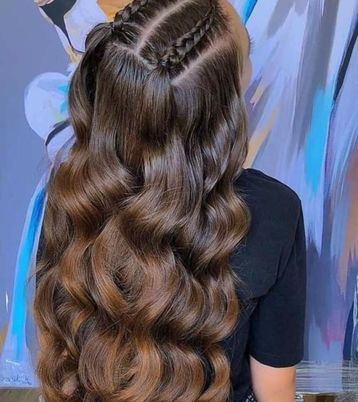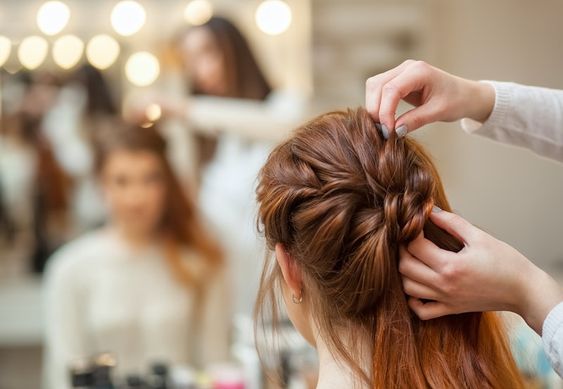French Braid vs Dutch Braid
Braiding is a classic hair technique that adds elegance and style to any look. Among the myriad of braiding techniques, French braids and Dutch braids are two of the most popular. Though they may seem similar, they each offer unique characteristics and aesthetics. This comprehensive guide will explore the differences between French and Dutch braids, how to create each style, and tips for choosing the best braid for your needs.
Understanding French Braids and Dutch Braids
Both French and Dutch braids are variations of the traditional three-strand braid but differ in their technique and appearance.
French Braid
Definition: The French braid involves weaving three sections of hair together, gradually incorporating additional hair from the sides as you move down the head.
Characteristics:
- Appearance: A French braid lies flat against the scalp and creates a smooth, classic look.
- Technique: Sections of hair are added to the braid as you go, resulting in a tight, neat braid that blends seamlessly with the hair.
Dutch Braid
Definition: The Dutch braid, also known as an inverted braid or reverse braid, is similar to the French braid but features a different weaving technique.
Read about; Why Do Scrunchies Smell Bad?
Characteristics:
- Appearance: A Dutch braid stands out from the scalp and creates a 3D, raised effect that gives it more texture and volume.
- Technique: Sections of hair are woven under each other rather than over, making the braid more pronounced and visible.
How to Create a French Braid
Creating a French braid requires practice but is relatively straightforward once you understand the technique.
Step-by-Step Instructions
Prepare the Hair:
- Start with clean, detangled hair. You can use a brush or comb to remove any knots.
- Optional: Apply a light styling product for better grip.
Begin Braiding:
- Start at the Crown: Take a small section of hair from the top center of your head.
- Divide into Three: Split this section into three equal strands.
Braid the Hair:
- First Cross: Cross the right strand over the middle strand, then the left strand over the new middle strand.
- Add Hair: Incorporate a small section of hair from the right side into the right strand before crossing it over the middle. Do the same on the left side.
- Continue Down: Repeat the process, adding hair from both sides as you braid down the head.
Secure the Braid:
- Once you reach the end of the hair, secure the braid with an elastic band.
Finish the Look:
- Gently tug at the braid to adjust the tightness or add volume as desired.

How to Create a Dutch Braid
The Dutch braid technique is similar to the French braid but requires an inverted weaving process.
Step-by-Step Instructions
Prepare the Hair:
- Start with clean, detangled hair. Apply a styling product if needed.
Begin Braiding:
- Start at the Crown: Take a small section of hair from the top center of your head.
- Divide into Three: Split this section into three equal strands.
Braid the Hair:
- First Cross: Cross the right strand under the middle strand, then the left strand under the new middle strand.
- Add Hair: Incorporate a small section of hair from the right side into the right strand before crossing it under the middle. Do the same on the left side.
- Continue Down: Repeat the process, adding hair from both sides as you braid down the head.
Secure the Braid:
- Once you reach the end of the hair, secure the braid with an elastic band.
Finish the Look:
- Gently pull on the sides of the braid to create a fuller, more textured appearance.
Comparing French and Dutch Braids
Both braids offer unique styles and benefits, making them suitable for different occasions and preferences.
French Braid
- Style: Classic, elegant, and smooth.
- Best For: Formal events, professional settings, or a neat everyday look.
- Pros: Lies flat against the head, providing a streamlined appearance.
- Cons: Can be less noticeable in certain hair types or textures.
Dutch Braid
- Style: Textured, raised, and voluminous.
- Best For: Casual outings, festivals, or a bold, eye-catching look.
- Pros: Stands out from the scalp, offering a more pronounced braid.
- Cons: May require more maintenance to keep the braid looking its best.
Tips for Perfecting Your Braids
To achieve the best results with French and Dutch braids, consider the following tips:
Use the Right Tools
- Brush or Comb: For detangling hair before braiding.
- Hair Elastic: To secure the braid at the end.
- Hair Clips: To hold sections of hair in place while you braid.
Practice Regularly
- Technique: Both braiding techniques require practice to master. Start with simple braids and gradually try more complex styles.
- Patience: Allow yourself time to improve your braiding skills.
Adjust for Hair Type
- Fine Hair: Use a texturizing spray to add grip and volume.
- Thick Hair: Divide sections carefully and use strong elastics to secure the braid.
Conclusion
French and Dutch braids are both versatile and stylish hair techniques that offer distinct looks. The French braid provides a smooth, elegant appearance, while the Dutch braid stands out with its textured, voluminous effect. By understanding the differences and mastering each technique, you can choose the braid that best suits your style and occasion. Regular practice and experimentation will help you perfect your braiding skills and achieve beautiful, eye-catching hairstyles.
Frequently Asked Questions (FAQs)
Q. How long does it take to learn how to braid?
The time it takes to learn braiding can vary. With regular practice, many people can master the basic techniques in a few weeks.
Q. Can I create a French or Dutch braid with short hair?
Yes, you can create both styles with short hair. You may need to adjust the technique and use smaller sections of hair.
Q. How can I make my braids last longer?
To make braids last longer, use hair products that add texture and hold, and secure the braid with a strong elastic band. Avoid excessive touching or manipulation.
Q. Are French and Dutch braids suitable for all hair types?
Both braids can be adapted to different hair types, but the results may vary based on hair texture and length. Experiment with both styles to find what works best for you.
Q. Can I incorporate other elements into these braids?
Yes, you can add accessories such as ribbons, beads, or flowers to enhance your braids. Additionally, you can combine braids with other hairstyles for a unique look.

Mark Davis is a dedicated writer with a keen interest in topics like personal growth, technology, and travel. With a background in journalism, Mark brings a thoughtful and analytical approach to his writing, delivering content that is both insightful and engaging. He enjoys sharing practical tips and fresh perspectives that help readers navigate their daily lives. When he’s not crafting his next article, Mark loves exploring new destinations, reading, and experimenting with the latest gadgets.

